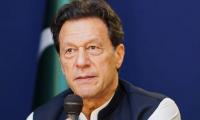LAHORE: Pakistan’s post-pandemic economic performance looked better than its regional competitors because the GDP of the country had already shrunk by 15 percent pre-pandemic. Accumulated demand after lockdown created economic activity.
The central bank also provided unusual support in the form of low interest loans to businesses for payment of salaries to their employees. There loan servicing was also deferred. Power and gas tariff were put on hold and interest rates were cut to 7 percent from 13.25 percent although the inflation is still hovering above 9 percent. The government was able to provide this support as it got a lot of international support. Moratorium was announced on our foreign loans for a year. The International Monetary Fund pitched in with $1.3 billion low markup support. The World Bank and Asian development provided billion more as long-term loans.
The honeymoon period is now over. Pakistan would have to service its foreign loans in a normal way now. The foreign funding would not be as generous as in the past. The IMF has not released the second and third tranche of its $6 billion facility. It will be a difficult task to roll over our short-term loans taken from some Gulf countries for foreign exchange supports. Our competing economies were a little late in opening their economies but now they are all geared up to challenge us in global markets. India and Bangladesh have seen their exports rising -though still below the pre-COVID-19 level.
The going would not be as smooth for our exporters as it was in July. The downfall in August exports should be an eye opener for our economic managers. In July we saw the per unit prices of our major export items increasing as there was no competition. This is the reason that the exports were higher in value terms and not in quantity. The prices will lower as other competitors pitch in.
Energy is the main villain in our economy. The entire system from production to distribution and bill collection is mired in corruption. Malpractices have increased in this sector since the inauguration of the PTI government. One fails to understand where the 40 percent increase in power tariff went. We are adding more circular debt than before. The tariff for the five favoured exporting sectors has also been increased by around Rs3/unit.
These exporting sectors though would still be getting Rs4/unit cheaper electricity than other exporters and domestic industry. It is yet to be seen how the main exporting industry copes with this tariff hike. In July and August, the spinners were in the driving seat although their exports declined. The domestic value-added sectors (bed-wear and apparel) consumed most of the yarn produced in the country.
It is worth noting that during this period the rate of yarn in local market was higher than its export price. The value-added sectors afforded higher yarn prices because their own per unit price also grew higher. Now that the world is coming back to normal the unit prices will go down and so will yarn prices. Next three months would be a testing time for our textile industry. It will have to improve its efficiencies to remain competitive.
Now the time for servicing the loans taken for disbursement of salaries is also drawing nearer and the moratorium on loans taken by the industries would also be over. Loan servicing would become an issue for most of them. The salaries they paid from loans without any productive work would start hurting them when they start repaying those loans. The instable rupee would be another worry for them.
Absence of clear-cut sector specific long-term policies would hamper their investment plans. The government is painfully slow in formulating prudent industrial policies and the bureaucracy is notoriously wrapped in redtape in ensuring their compliance.
Domestic demand has been severely dented by the pandemic and abnormal price hike. The unemployment rate is still very high. Some workers may rejoin their previous employers, but not all of them would be accommodated. The incomes have not increased at any level be it top executives or a low-end worker.
However, price of everything that is sellable has increased by a big margin in 15-50 percent range. This has put pressure on the purses of all employees big or small. For the poor, buying food would be their only priority and they would not be left with consumable surplus. For top executives there won’t be many options for buying luxury items.
This undated file image shows a set of gold bangles. — AFPKARACHI: Gold prices decreased by Rs2,100 per tola on...
Canada's Prime Minister Justin Trudeau speaks at the Laurier Club holiday party in Gatineau, Quebec, Canada, December...
People walk next to closed shops in Rome, Italy, December 6, 2023. — ReutersROME: Italy’s growth rebound from the...
A representational image of pylons and power lines. — Reuters/FileKARACHI: The British High Commission and the...
An Apple logo hangs above the entrance to the Apple store on 5th Avenue in the Manhattan borough of New York City,...
Representational image of a man counting Pakistani rupee notes. — AFP/FileKARACHI: Pakistan’s real effective...







